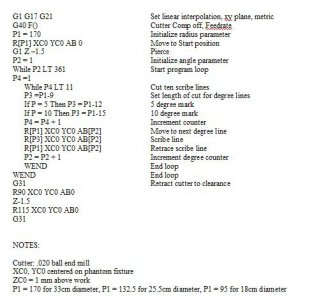4
4GSR
Forum Guest
Register Today
I do have a Cincinnati high number dividing plate I scored off of eBay years back that has a row of 127 holes. Haven't mounted it to my rotary table yet.
It would be nice to get someone here to offer to make a 127 hole plates for their dividing head using their CNC mill. Any offers?
It would be nice to get someone here to offer to make a 127 hole plates for their dividing head using their CNC mill. Any offers?

